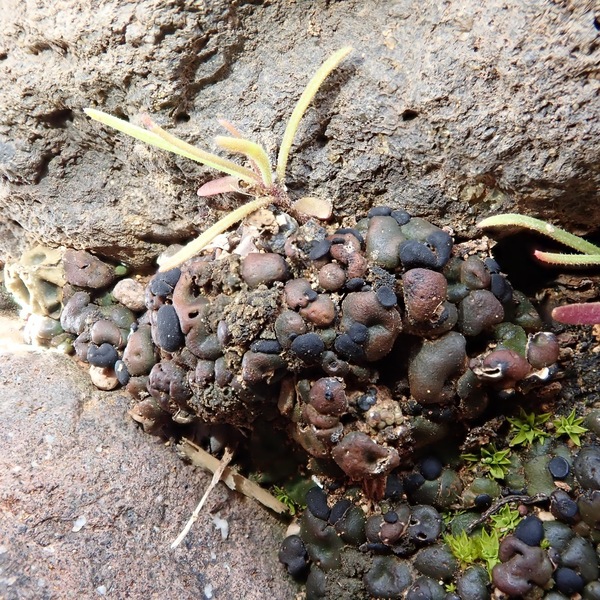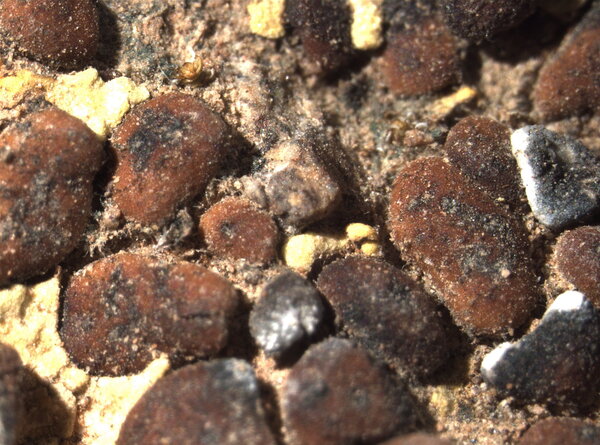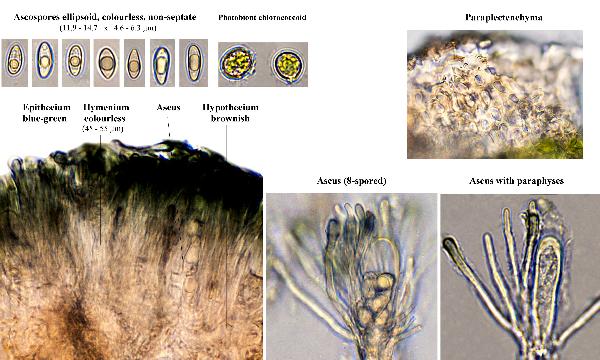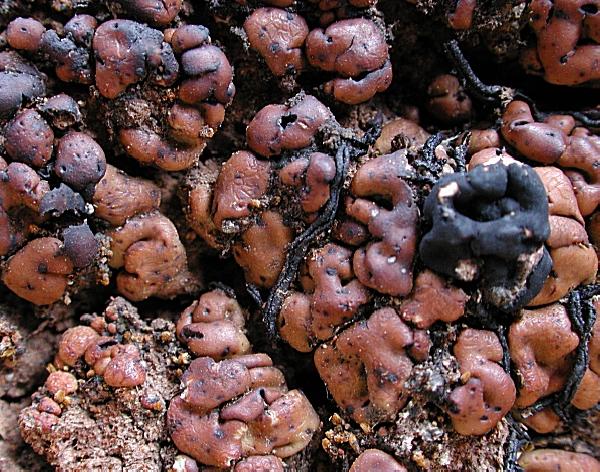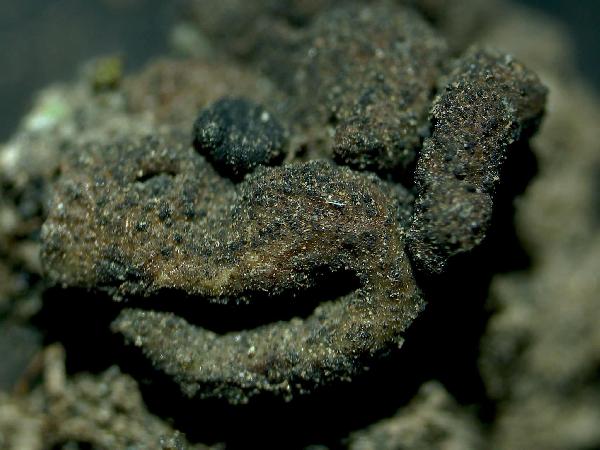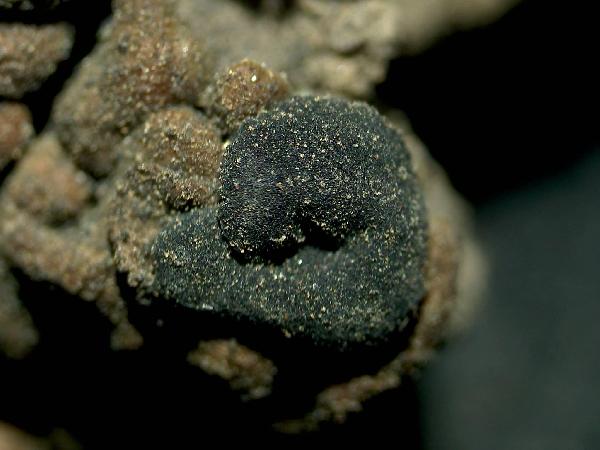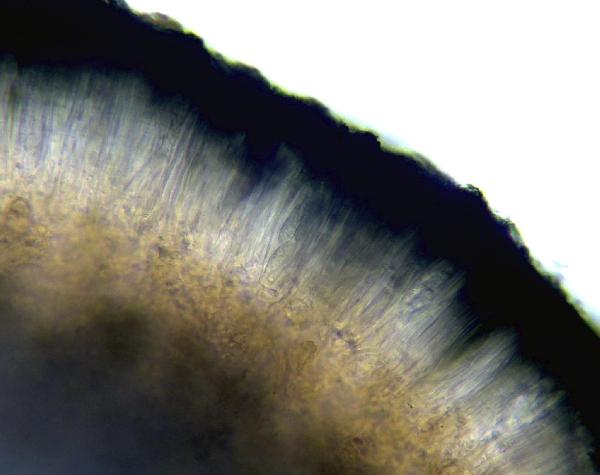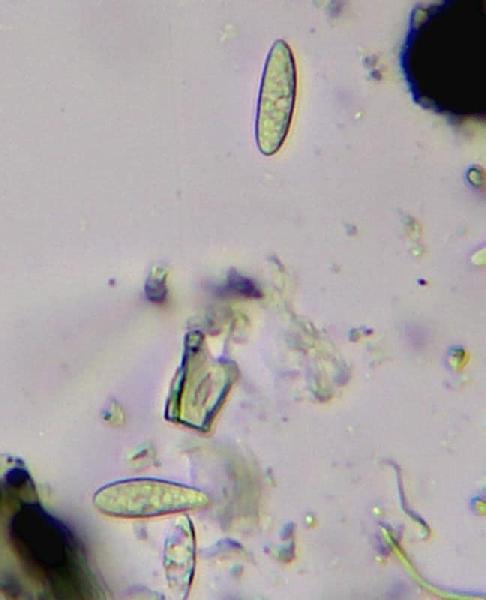Toninia pseudotabacina (Timdal) Timdal
in Timdal & Rui, Opuscula Phylolichenum, 23: 70, 2024. Basionym: Toninia tristis subsp. pseudotabacina Timdal - Opera Botanica, 110: 113. 1991 (1992).
Synonyms:
Description: Thallus squamulose, chestnut brown to dark brown, glossy, not forming cushions, the squamules contiguous to scattered, up to 3(-4) mm wide, bullate, but often with a central depression, with punctiform impressions developing into pores; lower surface pale. Upper cortex 40-160 µm thick, including an up to 100 µm thick epinecral layer, without crystals; algal layer continuous; medulla white, without crystals. Apothecia lecideine, sessile, strongly constricted at base, up to 2 mm across, with a black, flat to convex, smooth disc, and a distinct, smooth proper margin concolorous with disc. Proper exciple medium to dark brown (sometimes with a green tinge) in the rim, usually paler brown within, K-, N- or N+ violet (green pigment), lacking crystals; epithecium brownish to bright green, K-, N+ violet; hymenium colourless, 60-70 µm high; paraphyses not coherent, anastomosing, distinctly thickened above; hypothecium brownish. Asci 8-spored, clavate, surrounded by a gelatinous I+ blue coat, with a well-developed I+ blue tholus with a I+ darker blue tube and a well-developed ocular chamber, Bacidia-type. Ascospores 1-celled, hyaline, ellipsoid, 10-15.5 x 4.5-6.5 µm. Pycnidia dark, immersed. Conidia filiform. Photobiont chlorococcoid. Spot tests: thallus K-, C-, KC-, P-, UV-. Chemistry: thallus with terpenoids.
Growth form: Squamulose
Substrata: soil, terricolous mosses, and plant debris
Photobiont: green algae other than Trentepohlia
Reproductive strategy: mainly sexual
Commonnes-rarity: (info)
Alpine belt: very rare
Subalpine belt: very rare
Montane belt: extremely rare
Dry submediterranean belt: absent
Humid submediterranean belt: absent
Padanian area: absent
pH of the substrata:
1 2 3 4 5
Solar irradiation:
1 2 3 4 5
Aridity:
1 2 3 4 5
Eutrophication:
1 2 3 4 5
Poleotolerance:
0 1 2 3
Altitudinal distribution:
1 2 3 4 5 6
Rarity
absent
extremely rare
very rare
rare
rather rare
rather common
common
very common
extremely common
Loading data...
Occurrence data
Predictive map

P.L. Nimis; Owner: Department of Life Sciences, University of Trieste
Herbarium: TSB (4822)
2003/03/06
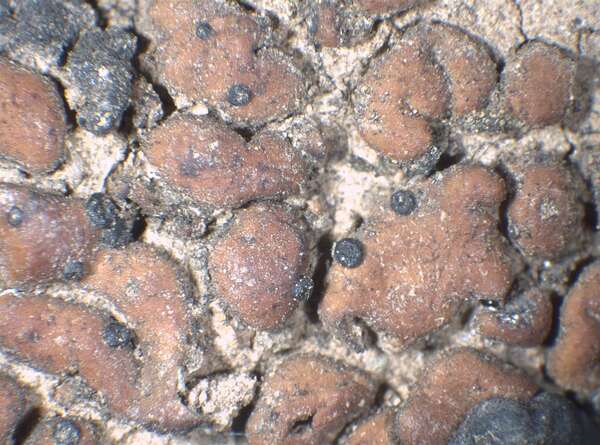
P.L. Nimis; Owner: Department of Life Sciences, University of Trieste
Herbarium: TSB (4822)
2003/03/06

Ulrich Kirschbaum CC BY-SA 4.0 - Source: https://www.thm.de/lse/ulrich-kirschbaum/flechtenbilder
Canary Islands; La Gomera--MS; se of Imada: El Azadoe.
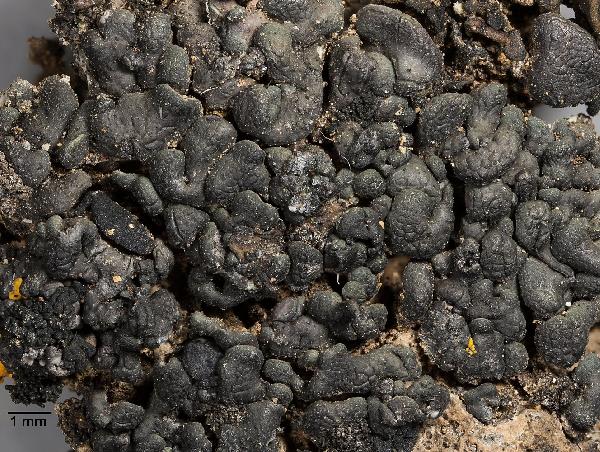
Ulrich Kirschbaum CC BY-SA 4.0 - Source: https://www.thm.de/lse/ulrich-kirschbaum/flechtenbilder
Canary Islands; La Gomera--MS; se of Imada: El Azadoe.
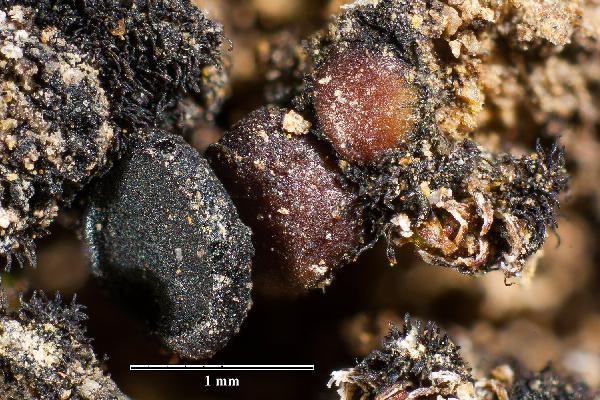
Ulrich Kirschbaum CC BY-SA 4.0 - Source: https://www.thm.de/lse/ulrich-kirschbaum/flechtenbilder
Canary Islands; La Gomera--MS; se of Imada: El Azadoe.
Growth form: Squamulose
Substrata: soil, terricolous mosses, and plant debris
Photobiont: green algae other than Trentepohlia
Reproductive strategy: mainly sexual
Commonnes-rarity: (info)
Alpine belt: very rare
Subalpine belt: very rare
Montane belt: extremely rare
Dry submediterranean belt: absent
Humid submediterranean belt: absent
Padanian area: absent
pH of the substrata:
| 1 | 2 | 3 | 4 | 5 |
Solar irradiation:
| 1 | 2 | 3 | 4 | 5 |
Aridity:
| 1 | 2 | 3 | 4 | 5 |
Eutrophication:
| 1 | 2 | 3 | 4 | 5 |
Poleotolerance:
| 0 | 1 | 2 | 3 |
Altitudinal distribution:
| 1 | 2 | 3 | 4 | 5 | 6 |
Rarity
absent
extremely rare
very rare
rare
rather rare
rather common
common
very common
extremely common
Loading data...
Occurrence data
Predictive map

P.L. Nimis; Owner: Department of Life Sciences, University of Trieste
Herbarium: TSB (4822)
2003/03/06

P.L. Nimis; Owner: Department of Life Sciences, University of Trieste
Herbarium: TSB (4822)
2003/03/06

Ulrich Kirschbaum CC BY-SA 4.0 - Source: https://www.thm.de/lse/ulrich-kirschbaum/flechtenbilder
Canary Islands; La Gomera--MS; se of Imada: El Azadoe.

Ulrich Kirschbaum CC BY-SA 4.0 - Source: https://www.thm.de/lse/ulrich-kirschbaum/flechtenbilder
Canary Islands; La Gomera--MS; se of Imada: El Azadoe.



